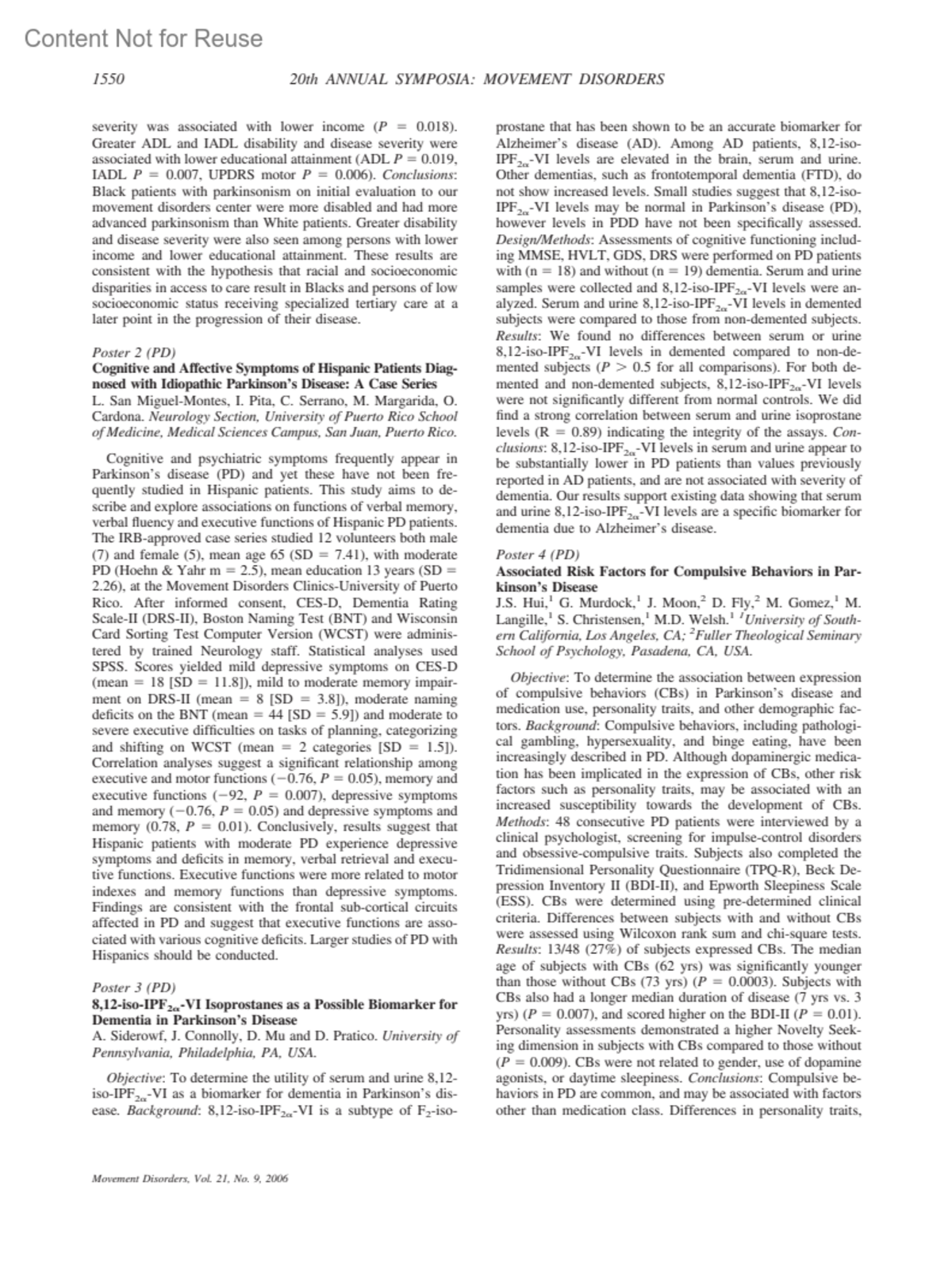Associated Risk Factors for Compulsive Behaviors in Parkinson's Disease
Poster 4 (PD)
- Hui, J. S.
- Murdock, G.
- Moon, J.
- Fly, D.
- Gomez, M.
- Langille, M.
- Christensen, S.
- Welsh, M. D.
1University of Southern California, Los Angeles, CA;
2Fuller Theological Seminary School of Psychology, Pasadena, CA, USA.
Cosponsored by the Parkinson Study Group, Huntington Study Group, Dystonia Study Group, Myoclonus Study Group, Tourette Syndrome Study Group, Cooperative Ataxia Group, Tremor Research Group, and The Movement Disorder Society
This activity has been planned and implemented in accordance with the Essential Areas and Policies of the Accreditation Council for Continuing Medical Education (ACCME) through joint sponsorship of The Movement Disorder Society and the Parkinson Study Group. The Movement Disorder Society is accredited by the ACCME to provide continuing medical education for physicians.
The symposia will consist of peer-reviewed platform and poster presentations designed to communicate recent research advances in the field of Parkinson's disease, Huntington's disease, ataxia, dystonia, myoclonus, Tourette's syndrome, tremor and other Movement Disorders to professionals in neurology and related disciplines. Practitioners, educators researchers are invited to attend. Abstracts of platform and poster presentations representing original material will be published in the September 2006 issue of Movement Disorders.
At the conclusion of this session, participants should be able to: 1) Identify by scholarly review, oral presentation and group discussion the current research into the diagnosis, prevention and treatment of Parkinson's disease and other Movement Disorders; 2) Identify the important advances in research and clinical treatments relating to a variety of Movement Disorders; 3) Discuss new pharmacological and non-pharmacological treatment options available for Parkinson's disease and other Movement Disorders; 4) Identify the mechanisms (genetic, environmental, pathophysiology, neurobiology) linked to Parkinson's disease and other Movement Disorders 5) Discuss the diagnostic approaches and tools available for Parkinson's disease and other Movement Disorders.
Published online 30 August 2006 in Wiley InterScience (www.interscience.wiley.com).

